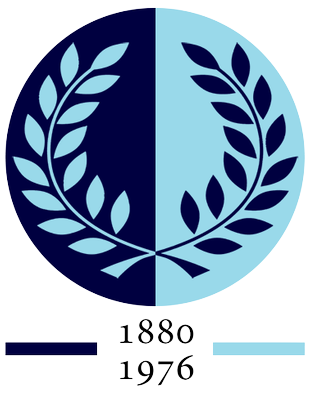
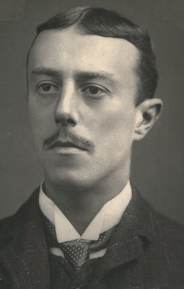
Aside from the National, which predates it by three years, the Oxford and Cambridge University Cross-Country Race is the oldest inter-club match still in existence and has a rich history. Barring the war years and Covid-19 pandemic period, it has been held annually since 1880. The first race was hosted by Oxford on Thursday, December 2nd and run over a 7½ mile course which started from the Royal Oak pub and covered the Woodstock Road, Cherwell, Water Eaton and Canal areas to the north and east of the city. Oxford won by 22 points to 33 with Charles Grinstead of Keble coming home first. However, it was an unsatisfactory result as “Malicious boys tampered with the trail,” causing two Cambridge runners to trail home a long way behind the field.
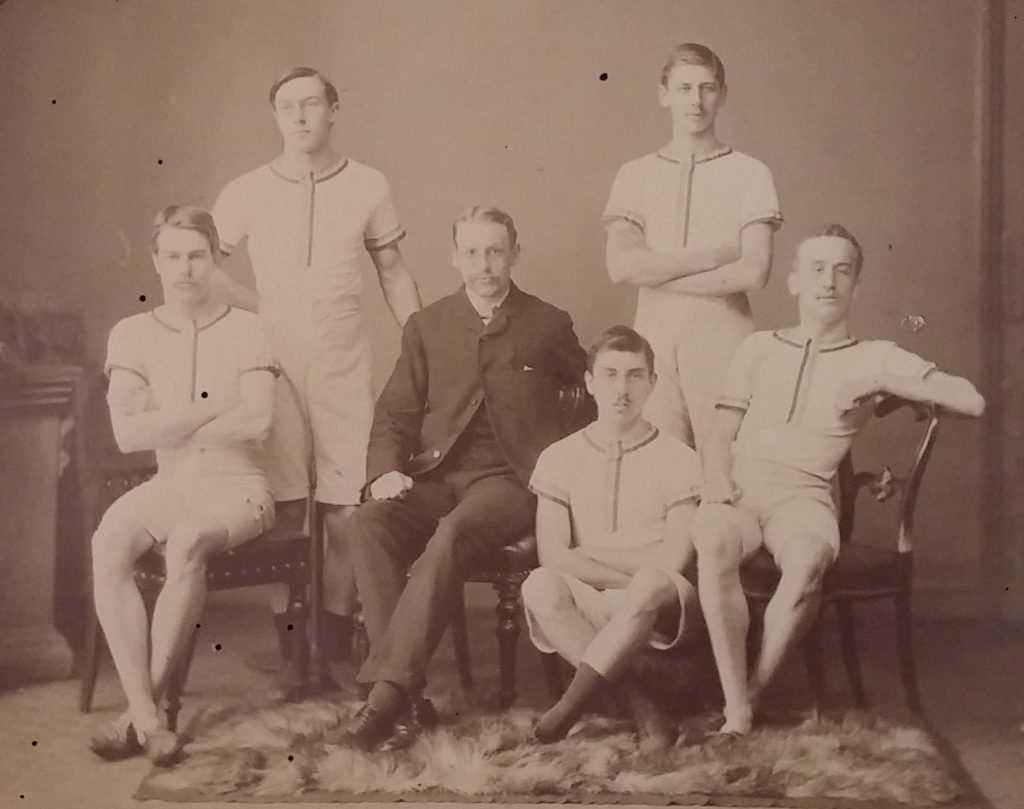
In the early years, the universities took it in turns to host the race. The Cambridge course started from the Hills Road railway bridge and from 1882 onwards, the Oxford course began at the University Arms on Cowley Road. The route was always marked out by a paper trail. About ten minutes before the race started, two “hares” from each university would depart and lay the trail for the “hounds” to follow. Unsurprisingly, this method left considerable scope for the competitors, particularly those from the visiting side, to get lost and this often happened. The most infamous race was in 1886, held over a massive 9½-mile Oxford course from the University Arms to Shotover Hill, then Wheatley Windmill and back to the city via Horspath. In that year, Frederick Philpot (St. John’s, Cambridge) was possibly denied victory when he lost the trail and William West (Christ Church) – one of Oxford’s top runners – trailed in 20 minutes behind the pack.
After Oxford’s initial, and unsatisfactory, win, Cambridge asserted control and won seven races in a row up to 1887. Their dominance stemmed not only from a wealth of talent at their disposal, but internal problems that dogged Oxford. The Oxford University Hare & Hounds in those days were a part of O.U.A.C. and suffered from the prejudice that existed at that time towards the sport. The prevailing opinion was that cross-country work made a man slow for the ‘path’ and so O.U.A.C’s top milers and three milers were generally discouraged from taking to the country. Oxford were slow to catch up, but did so by the late 1880s largely due to the efforts of William Pollock Hill (Keble) – the first real star of the race and winner in 1886, 1888 and 1889 – who successfully combined the two disciplines.
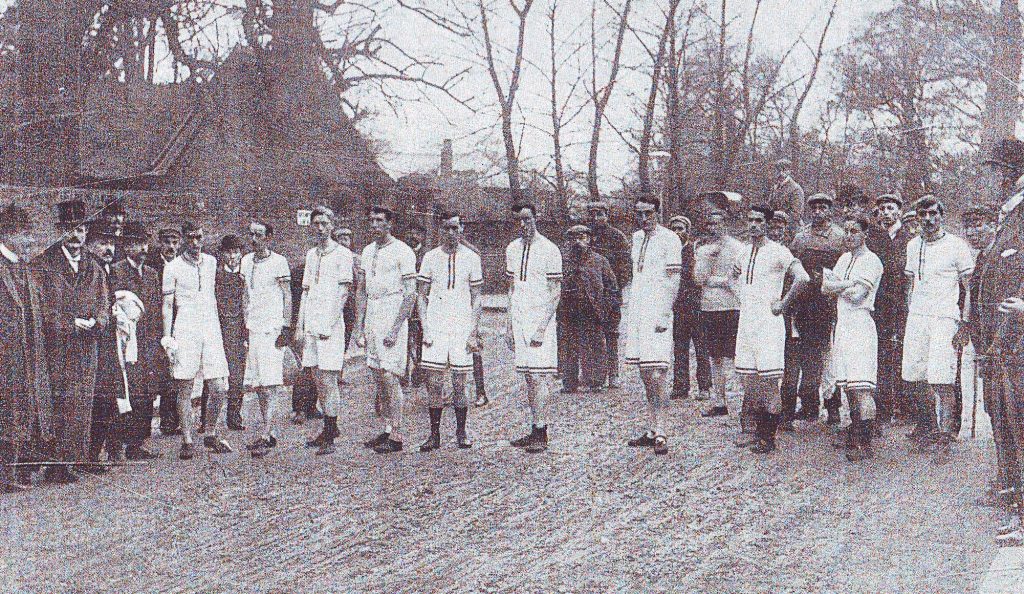
In 1890, after ten years alternating between Oxford and Cambridge, the race was well-established and the universities decided to seek a neutral course for the first time, largely because the Shotover and Gogs courses were regarded as “shockingly unfair” to the visiting side; Shotover with its fearsome hill and the Gogs with its notorious ‘ploughs’. The clubs chose Thames’ course at Roehampton largely through the efforts of Robert Conway (St. Catharine’s) who had run for Cambridge in 1883 and 1884 and had joined Thames in 1888. The intended course was the Club’s long distance one and very similar to the one used in later years, apart from one small difference. Instead of starting in front of the King’s Head on Roehampton Lane, the race began at the Drying Ground at the top of Roehampton High Street on Putney Heath with a straight run to the cross-roads at the top of Roehampton Lane. From there, it was down to Beverley Brook, across the watersplash, up Coombe Hill, down Coombe Lane to Raynes Park and then home via Cottenham Park, the Crooked Billet and a two-mile run-in across Wimbledon Common to the Old Well House on Putney Heath.
Sadly, the event was a fiasco as the runners lost the trail shortly after the summit of Coombe Hill, in the vicinity of Raynes Park. Thomas Colbatch-Clark (Trinity, Cambridge) was leading at the time and once it had become clear to the runners that they had lost the trail, they decided to trot home in a pack and made no attempt at racing. The spectators at the King’s Head, therefore, had to endure an “anxious wait” and then had the “annoyance of seeing them trot home at their leisure.” A no-race was consequently declared and the match was re-run at Oxford in February 1891, with the Dark Blues notching up their third win in a row.
After the disappointment of November 1890, the universities returned to the old format. However, seeking a neutral course was never far from their thoughts. First moves were made in 1895; however it was decided to wait for one more year so that both teams had hosted eight races over home turf. The fact that the 1894-95 season was a difficult one for Thames with the club almost folding and the 1895-96 one was not viewed with much optimism may have been a contributory factor in the decision to delay for 12 months. A year later and there were no such issues and the race was successfully staged on Friday, 4th December. Cambridge notched up a convincing 20 points to 35 victory, with William Gibberd (Trinity) leading them home.
Following the move to Roehampton, the two decades in the run up to the Great War were really the first golden era of the race. The London venue and the ever increasing standard of the teams meant that it had started to capture the attention of the press and the wider public. However, the outbreak of war in 1914 brought it to a temporary halt with Cambridge leading the series by 19 wins to 15.
Following a six year gap, the race returned in 1919 with Cambridge winning for the 20th time. The first man home was Oxford’s captain, Evelyn Montague (Magdalen), who went on to compete in the steeplechase at the 1924 Paris Olympics and was the basis for the character “Aubrey Montague” in Chariots of Fire. However, the 1919 race was perhaps most notable for the performance of Andrew Telfer (Selwyn), who finished second. He had run in the last pre-war race in 1913 and had been so severely wounded in the war that it was feared he would never run again. The following year saw the first change to the format since the inaugural race when the size of the sides was increased to six (although only the first five scored).
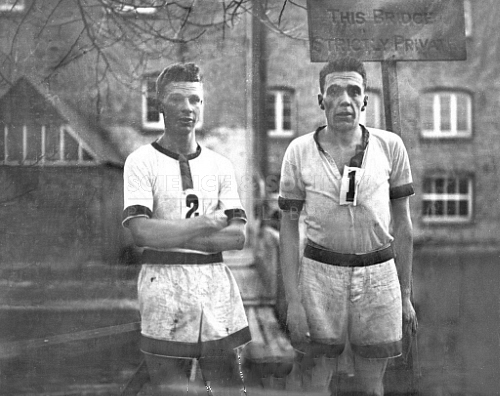
Five years later came a more significant change to the race. In the early 1920s, a number of developments meant the course was becoming increasingly problematic. The opening of New Malden Golf Course cut off the section of the course between Coombe Hill and Raynes Park and increased development on the slopes leading back to the Common in the Raynes Park area meant that a long section was now run on hard roads between houses. Finally, the construction of the Kingston Bypass in 1924-26 was threatening to cut off access to Coombe Hill. Therefore, the decision was made to move the race and after much deliberation, the Horton Kirby course in Kent was chosen. Some of this course lay across land owned by a Mr Fooks, whose son Tommy (Christ’s) won the last Roehampton race in 1925. The first Horton Kirby race was held on 11th December 1926, with Oxford filling positions one to five and seven. In all, thirteen races were held at the hilly Kent venue up to the Second World War, when the race was brought to a halt again with Cambridge leading by 29 wins to 25. During this time Mr Fooks senior had done much to help with the race arrangements and was elected an Honorary Associate.
The inter-war years also saw the instigation of the Second Team University Race – which soon came to be known as the Tortoises-Spartans match after the names of the respective teams – in 1937. This was one of the first second team Oxford-Cambridge contests staged in any sport and was the first step to developing the 2nds-5ths races, which are now always held on the Saturday before the Blues races and alternate in venue between the universities.
Unlike in 1914, the outbreak of was in 1939 did not mean a complete stopping of the race. From 1940 to 1945, six unofficial events were held. Due to the impracticality of holding the race at Horton Kirby, the race returned for the first time in 50 years to Oxford and Cambridge. The first race was held at Oxford in February 1940 and the last was held back at Roehampton over a new Thames course in February 1945. Cambridge were dominant during this period, winning five out of six.
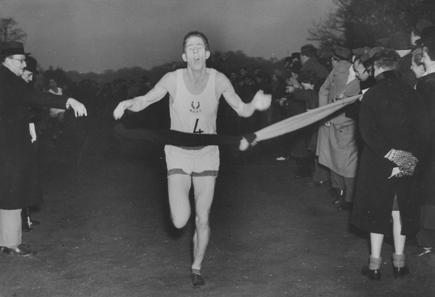
Following the end of the war, arrangements were made for re-starting the official series and the 55th race was held in December 1945 at Roehampton. The new course bore no resemblance to the pre-1926 one as increased traffic on Roehampton Lane and the A3 meant that starting the race in front of the King’s Head was no longer practical. It started at finished at the Big Holly Bush, close to where Roehampton Lane met the A3, and stayed completely on the Common. It was devised by Charles Faber and served to prove a point. At the time, Thames was seriously considering relocating to Claygate due to the increased development around Roehampton and the belief that the Common on its own did not give sufficient space for a course. Faber devised the figure-of-eight route that was to be the basis of Thames’ and the University Race’s courses for the next 55 years.
Cambridge won the first two post-war races, but then Oxford moved into a period of dominance, winning eight of nine to 1955. This was the era of Oxford’s middle distance stars, many of whom took part in the race. Runners of the calibre of Peter Curry (Oriel), Philip Morgan (Wadham), Jim Scott-Wilson (Magdalen), Ian Boyd (Brasenose), Tony Weeks-Pearson (St. Catherine’s), Alan Gordon (Magdalen) and, of course, Roger Bannister (Exeter) and Chris Chataway (Magdalen) all donned the Dark Blue colours during this era. Also appearing in the race, although for Cambridge, was the other member of the four minute mile trio – Chris Brasher (St. John’s). Chataway’s third win in 1952 was the famous fog bound race run in one of the last of the London peasoupers, which claimed 1,500 lives. The University Race had the distinction of being the only sporting event in London to survive the weather and was run over the special Thames fog course. Oxford recorded the biggest win ever in the series, 21 points to 66 .
Following Oxford’s success of the 1950s, Cambridge registered a similar run in the later-1950s and early-1960s. This period was dominated by Mike Turner and his Queens’ College school of cross-country and the Light Blues excelled in both the University Race and British Universities’ Championships. Alongside Turner, the club boasted runners of the calibre of Tim Johnston (Trinity), Tim Briault (St. John’s), Herb Elliott (Jesus) – who was already an Olympic champion when he ran in the 1960 race, Martin Heath (Emmanuel) and Bruce Tulloh (Selwyn) and recorded possibly the greatest period of success the race has seen. Between 1958 and 1964, Cambridge lost only three out of the 28 Oxford-Cambridge races held (at this point there were annual matches for the Blues, Tortoises-Spartans and 3rd and 4th teams).
However, by the late-1960s, Oxford had recovered and the race was changing once again. Although it no longer occupied quite the position it once had in the athletics calendar, it was still the stage for a number of very talented runners, among them Henk Altmann (New College), John Valentine (St. John’s), Tony Moore (St. Edmund Hall), Bob Steele (New College), Julian Goater (St. Edmund Hall), Chris Garforth (Queens’) and Warwick Ewers (Worcester), who by 1977 had set a new appearance record for the race with seven (to be equalled in 2002 by Nick Talbot (University)). In 1970, there was a significant move back to the past when, following completion of the pedestrian underpass on the A3 at the top of Roehampton Lane, the race was once-again able to start in Roehampton village, this time next to the War Memorial on Putney Heath. Sadly, however, this change was only to last for five years as the King’s Head, the venerable backdrop to the race since 1896, was lost to Thames in the Great Fire of 1975. By the start of the 1975-76 season, new (temporary at first) Headquarters at the Memorial Playing Fields, Roehampton Vale had been found and the race was able to continue without interruption over a new course.
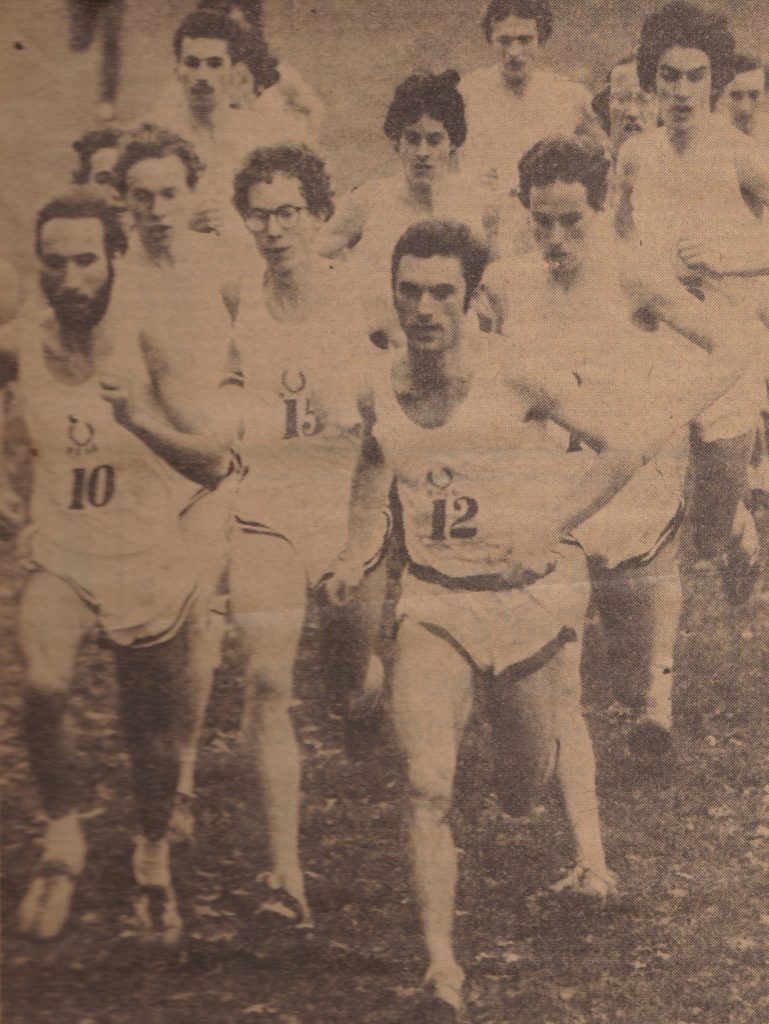
The other major event of the 1970s was the beginning of the ladies’ race in 1976. The number of women at both universities had steadily grown in the post-war period and following the first Ladies ‘Varsity Athletic Sports match in 1975, it was only natural that the cross-country runners would soon follow. Initial plans – which came from Oxford – were made to have a race on the day of the 2nds to 5ths University Races the week before the 1975 Blues race. Oxford won that contest comfortably and a year later the contest moved to Roehampton to join the Gentlemen’s Race. This posed some problems for Thames as it was at that stage still an all-male club and the interest from the Club at large was at best fairly lukewarm. Undaunted, John Bryant made sure the race was brought under the auspices of Thames and devised a 2.8-mile course that took in some of the best landmarks of the men’s course. Since then, the race has always taken place in conjunction with the gentlemen’s match and, apart from 1984, it has always been held directly before it. Oxford won the first race by a maximum score of 10 points to 34 with Lynne Wightman (Lady Margaret Hall) the first runner home.
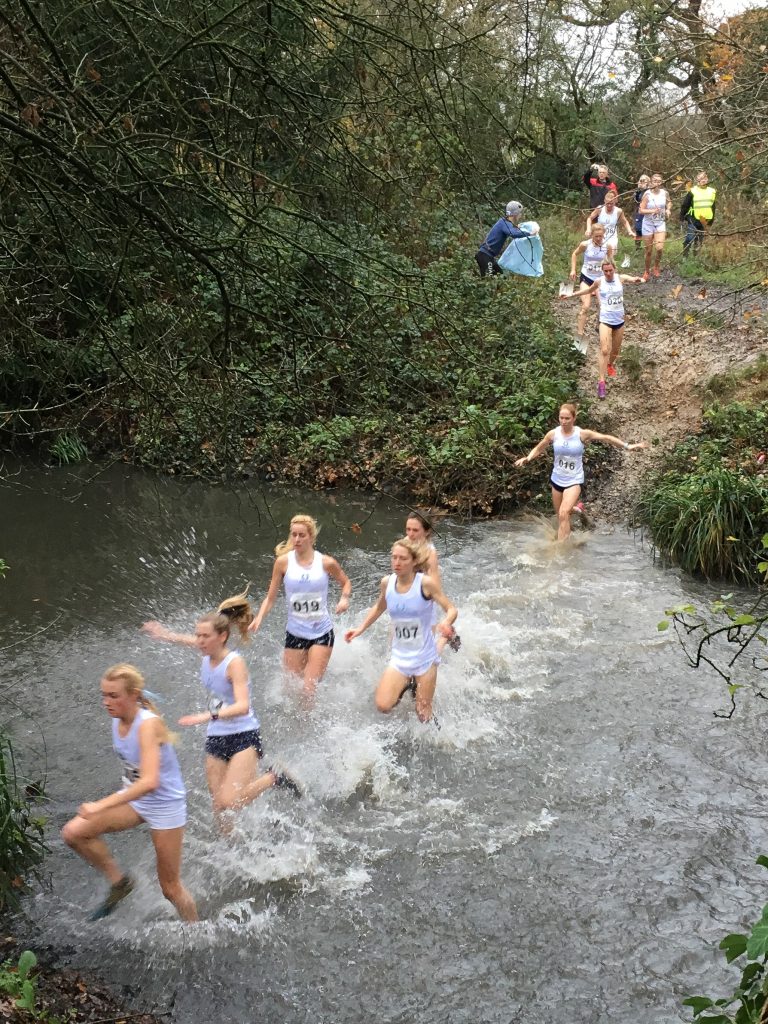
In 1990, the gentlemen’s race celebrated its centenary and it was won for the fourth time in succession by Simon Mugglestone (Hertford and Keble), probably the finest runner ever to appear in it. However, the shine was taken off his victory by one of the biggest upsets in the event’s history with Cambridge registering their first win for seven years. The Centenary Race also saw the re-introduction of the Beverley Brook watersplash – gone since 1972 – and the first Old Blues’ Race, run over a six mile course before the two Blues matches. Six years later, the celebration of the 100th anniversary of the first hosting of the race by Thames Hare & Hounds was marked by a similar upset, but this time it was Oxford who ended a dismal losing sequence with narrow five point win.
While the Oxford gentlemen had been struggling in the early-1990s, their ladies had been putting together the longest run of success by either side in the history of the Blues races, eventually securing nine victories in a row between 1993 and 2001. Winning the first race in that sequence was Emma Coleman (Magdalen and Oriel) who made history by becoming the first person to win for both sides, having previously been victorious in 1991 while at Newnham, Cambridge. The 1996 race was significant for it saw Stephanie Cook (Lincoln) come home first. Four years later, she would be winning the gold medal for Great Britain in the modern pentathlon at the Sydney Olympics. 1996 also saw the first appearance in the race of Ellen O’Hare (Merton) who by 2003, now as Ellen Leggate (and of Peterhouse) had a new appearance record of eight (four for Oxford and four for Cambridge). This record was surpassed in 2019 when William Ryle-Hodges (Queens’ & Magdalene, Cambridge and St. Antony’s, Oxford) notched up his ninth appearance, seven for Cambridge (2011, 2012, 2013, 2016, 2017, 2018 and 2019) and two for Oxford (2014 and 2015). Only twice was he on the losing side (2017 and 2018), thus making him the most successful runner (in terms of team victories) in the contest’s history.
Although there were attempts to hold a race in December 2020, March 2021 and April 2021, the Covid-19 pandemic meant that there was no contest in the 2020-21 academic year. The race returned on Saturday, December 4th 2021 when Oxford took victory in the 45th Ladies’ Race and Cambridge in the 130th Gentlemen’s Race.
University Race Results Summary

Previous results: 2018; 2019; 2020 (no race); 2021; 2022; 2023; 2024
A full list of results back to 1880 can be found here.
Progression of the Gentlemen’s University Race Series

Progression of the Ladies’ University Race Series

The current course map as well as further details on the most recent race can be found here.
